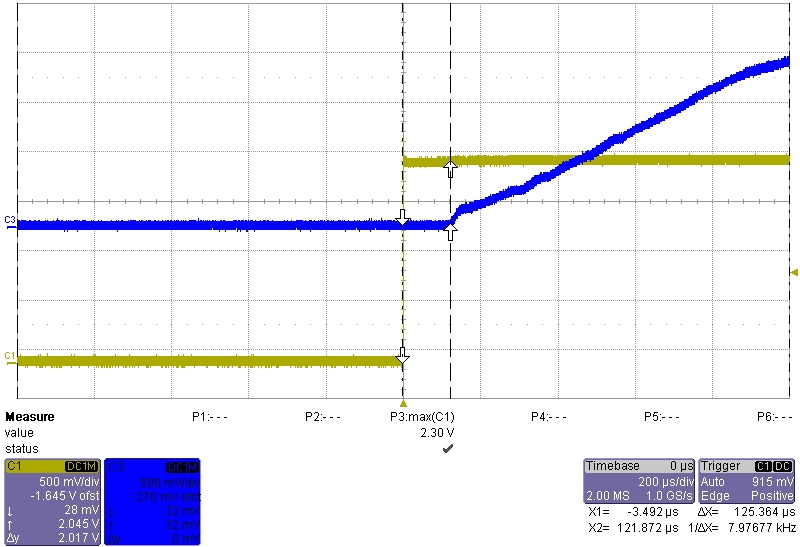Hi Power Team,
Good afternoon, my customer is looking at using the LMZ20501 and we are interested to understand the EN better.
In this scenario, the EN input will be rising slowly (about 200uS/V), this will leave the device in between the VIL and VIH state for roughly 200uS. Will that be OK? The same will happen during turn-off, could this cause any issues?
With this, if there is any hysteresis built into the EN pin, that would be interesting to note as well. I realize it isn't in the datasheet/tested.
Thank you and please let me know if you have any questions.
Regards,
~John





